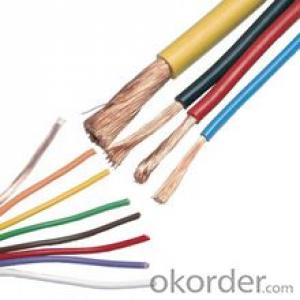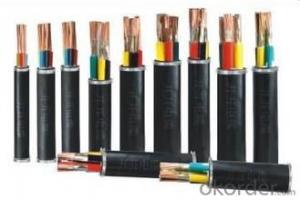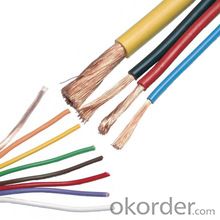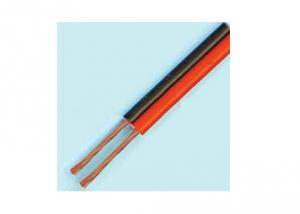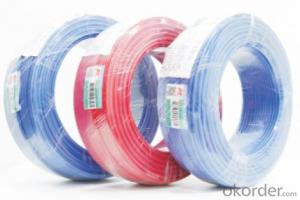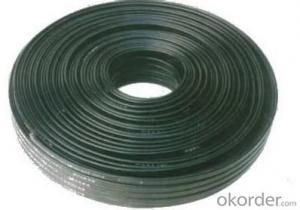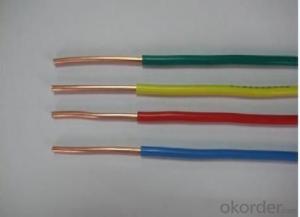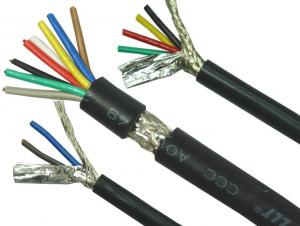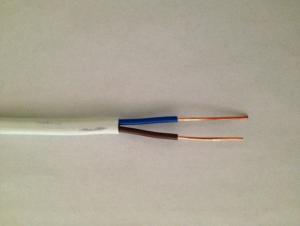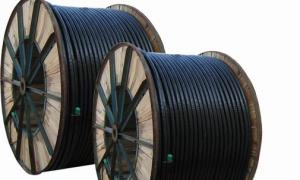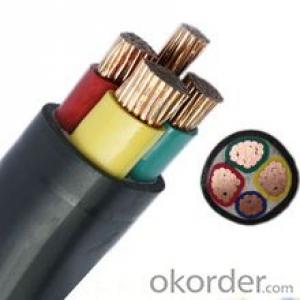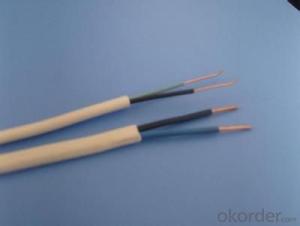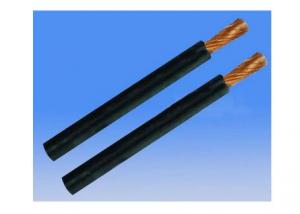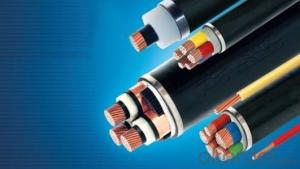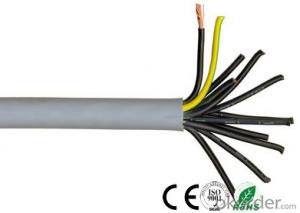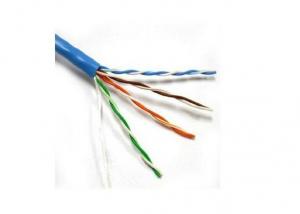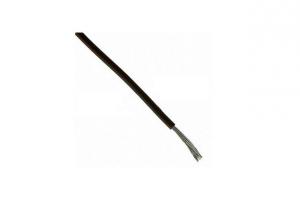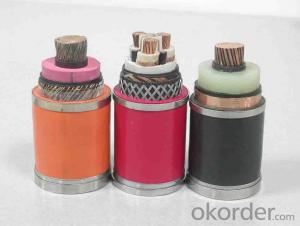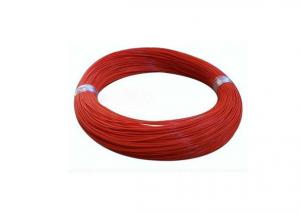Low Voltage Copper Conductor PVC Insulation Wire Cable
- Loading Port:
- China main port
- Payment Terms:
- TT OR LC
- Min Order Qty:
- 100 m
- Supply Capability:
- 20000 m/month
OKorder Service Pledge
Quality Product, Order Online Tracking, Timely Delivery
OKorder Financial Service
Credit Rating, Credit Services, Credit Purchasing
You Might Also Like
Standard
IEC 60227
Application
Low voltage copper conductor PVC insulation wire cable is widely used in commercial and residential construction projects of nominal voltage not exceeding 450/750V a.c.
Product Description
1) Conductor: class 1, 2 and 5 copper, tinned or plain
2) Sectional area: 0.12 - 400mm2
3) No. of cores: 1 ~ 60
4) Insulation: PVC
5) Oversheath: PVC
6) Max. conductor DC resistance at 20°c
| Sectional Area (mm2) | 0.5 | 0.75 | 1.0 | 1.5 | 2.5 | 4 | 6 | 10 | 16 | 25 |
| Plain Copper (Ω/km) | 36.0 | 24.5 | 18.1 | 12.1 | 7.41 | 4.61 | 3.08 | 1.83 | 1.15 | 0.727 |
| Tinned Copper (Ω/km) | 36.7 | 24.8 | 18.2 | 12.2 | 7.56 | 4.70 | 3.11 | 1.84 | 1.16 | 0.734 |
| Sectional Area (mm2) | 35 | 50 | 70 | 95 | 120 | 150 | 185 | 240 | 300 | 400 |
| Plain Copper (Ω/km) | 0.524 | 0.387 | 0.268 | 0.193 | 0.153 | 0.124 | 0.0791 | 0.0754 | 0.0601 | 0.0470 |
| Tinned Copper (Ω/km) | 0.529 | 0.391 | 0.270 | 0.195 | 0.154 | 0.126 | 0.100 | 0.0762 | 0.0607 | 0.0475 |
Product Models
| Code | Description | Rated Voltage (V) | No. of cores | Sectional area (mm2) |
| 60227IEC01 | Single-core non-sheathed cable with rigid conductor for general purposes | 450/750 | 1 | 1.5-400 |
| 60227IEC02 | Single-core non-sheathed cable with flexible conductor for general purposes | 450/750 | 1 | 1.5-240 |
| 60227IEC05 | Single-core non-sheathed cable with solid conductor for internal wiring for a conductor temperature of 70 °C | 300/500 | 1 | 0.5-1 |
| 60227IEC06 | Single-core non-sheathed cable with flexible conductor for internal wiring for a conductor temperature of 70 °C | 300/500 | 1 | 0.5-1 |
| 60227IEC07 | Single-core non-sheathed cable with solid conductor for internal wiring for a conductor temperature of 90 °C | 300/500 | 1 | 0.5-2.5 |
| 60227IEC08 | Single-core non-sheathed cable with flexible conductor for internal wiring for a conductor temperature of 90 °C | 300/500 | 1 | 0.5-2.5 |
| 60227IEC10 | Light polyvinyl chloride sheathed cable | 300/500 | 2, 3, 4, 5 | 1.5 - 35 |
| 60227IEC41 | Flat tinsel cord | 300/300 | 2 | - |
| 60227IEC43 | Cord for indoor decorative lighting chains | 300/300 | 1 | 0.5-0.75 |
| 60227IEC52 | Light polyvinyl chloride sheathed cord | 300/300 | 2, 3 | 0.5-0.75 |
| 60227IEC53 | Ordinary polyvinyl chloride sheathed cord | 300/500 | 2, 3, 4, 5 | 0.75 - 2.5 |
| 60227IEC56 | Heat resistant light PVC sheathed cord for a maximum conductor temperature of 90 degrees | 300/300 | 2, 3 | 0.5-0.75 |
| 60227IEC57 | Heat resistant ordinary PVC sheathed cord for a maximum conductor temperature of 90 degrees | 300/500 | 2, 3, 4, 5 | 0.75-2.5 |
| 60227IEC71f | Flat polyvinyl chloride sheathed lift cable and cable for flexible connections | 450/750 | 3-24 | 0.75-25 |
| 60227IEC71c | Circular polyvinyl chloride sheathed lift cable and cable for flexible connections | 450/750 | 4~30 | 0.75-25 |
| 60227IEC74 | Oil resistance, polyvinyl chloride sheathed, screened flexible cable | 300/500 | 2-60 | 0.75-2.5 |
| 60227IEC75 | Oil resistance, polyvinyl chloride sheathed, unscreened flexible cable | 300/500 | 2-60 | 0.75-2.5 |
- Q: and what do i do with the ground and neutral when switching from an outlet that has a spot for all four wire to one that only has three where does the ground go
- AL is aluminum CU is copper
- Q: I had to extend some speaker wires, so i used a second speaker cord and wrapped it to the one out the speaker, but the exposed section doesnt look to safe, and it runs behind my bed so i`m a little unsure about it being uncovered. Can i use duct tape just to cover the open wires? or is electrical tape NEEDED? It is plugged into the wall, not battery powered.
- ALWAYS use electrical tape where electricity is concerned, the clue is in the name. It was designed to work with a current, Duct tape will eventually catch fire etc.
- Q: First off, I apologize for my ignorance; I'm new at this. Does electrical wire (12 gauge for example), come as a single wire? For example, if I'm installing a 20A outlet 40 feet away from the breaker, do I need 40 or 80 feet of 12 gauge wire?It is my understanding that each outlet needs a (+) and (-) wire, as well as a grounding wire. Is this correct?Thanks for your help!
- You would need over 80 feet of wire. In fact you would need over 120 feet of wire. Bends and non-direct routing will take up some of the distance. You need three conductors: one hot (usually black, blue or red in the US), one neutral (white in the US) and a ground (either green or bare). Individual wires MUST be run in conduit, but if the entire run is in a sheltered area you may be able to use nonmetallic cable, for instance Romex. This is the white or yellow flattish cable you see that has two wires inside it plus a grounding conductor. In such instances the ground is usually bare. Under certain conditions you can also use flexible armored cable (looks a bit like a flex lamp neck). I'm not wild about the stuff but it has its uses. You sound pretty new to the whole electrical trade and I strongly advise you to proceed cautiously after reading up on the subject. If in doubt, call a pro. It won't be cheap, but it's cheaper than rebuilding your house after it burns down, or paying funeral costs.
- Q: I am prepping it for a derby and accidentally cut the fuel pumps electrical wire harness thinking it was stereo or tail lights. I just want to hook it up to start it and move it to the shop where i can really tear into it. There are 4 wires. Black, purple, grey, and black w/ yellow stripe. I want to bypass the electrical connectors and just splice it into the wires that run along the drivers side floor. What color wire is what and what color do i splice it to?
- Easy way? The gray is the pump. Run it to a hot key wire or a toggle switch. Run the other two black wires to ground.
- Q: I want to upgrade from a 100amp service panel to 200 amp service panel, I am hiring an electrician, however i feel im being taken advantage of (im disabled), I would like to know how to find out what the load/rating is on the existing wires from the power hub accross the street to my electrical panel really are, the wires are underground and every bid I have gotten calls for the tar road to be cut up and entire new wires installed and I dont have that kind of money. Also since the house is NOT that old I dont think the wires need to be replaced. since some of my neighbors have upgraded w/o tearing up the road etc.
- Contact your utility company for the power to your panel. They will know the size of the transformer that is feeding your home. If you are at all in doubt about the electrician doing the work, get another electrician. It is your money and how you spend it and with who is your business. Contact the local BBB, also contact the local habitat for humanity group and talk with them about the contractors they use. A panel upgrade to a 200 amp is expensive even without the road issue. Have an energy survey done on your panel and service first. You may not need the additional power, just more breaker space. This is then a distribution issue, not a power issue. Talk to your local energy company.
- Q: I was measuring the electrical conductivity of certain wires at school in a lab in Amperes with an Avometer set on ''B'' and the results got:nichrome 0.2mm 1 Anichrome 0.4mm 0.8 ACopper 0.2mm 0.7 AIron 0.5mm 0.23 AAre those results right? And if so does that mean that the Iron wire has the best conductivity among those those indicated?
- Conductivity is invese to resistivity. So a high resistance means a low conductivity. High resistance means less current can flow. A low resistance means a high conductivity. Low resistance means more current can flow. Something is wrong with your experiment setup because you don't state the length of the wires. The longer the wire, the greater its resistance. Copper has the lowest resistance of the three types of metals you list. Therefore it should have the highest conductivity and the highest current flow. Yet it has lower current flow than nichrome wire of the same diameter. So I have to assume the 0.2 mm copper wire was considerably longer than the 0.2 mm nichrome wire. Please check this out and ask the question again when you find out the lengths of the various wires you tested. The other thing I would want to know is what kind of power supply you were using. Was it a constant voltage supply ? What other devices were in the test setup ? Do you have a circuit schematic ? You can post an image on image-sharing websites and put the link in your question.
- Q: I am adding a new electrical outlet and need to know how many volts the electrical wire needs to be rated for. I will be running the new outlet from an existing outlet This existing outlet uses a wire that reads Type NM-B WITN Ground 600 Volts. Does this mean the wire from the existing outlet to new outlet also has to be 600 Volts? I have a 120 Volt laying around but it doesn't sound like I should use that one. Am I right? Thanks!
- 600 volts is the rating on the wire, a typical outlet uses 110 to 120 volts -
- Q: Construction workers told me that double insulation is not good insulation, the choice of single-layer insulation is good. I feel double the skin should be safe it! They are not in order to save money so that Oh? More
- 1mm2 power cord can generally withstand 4 ~ 8A current, according to your UPS output power to decide! For example: you use the UPS for the 6KVA frequency machine, the power factor is generally 0.. so the maximum load power of 4800W or so; that is 4800/220/4 = 5.. select the 6mm2 copper cable (ground can be fine: 4mm2 enough)
- Q: Hi,If you were to wire up this motor, how do you go about doing that? To connect it to the mains for example.
- There are 5 or 6 11966 motors ranging from 1.5VDC, 1 Watt to 12VDC 20 Watts. These motors are normally powered by flashlight (torch) cells and not 220VAC. Adapters and approved, rectifying power supplies are probably available from the same source. You can wire these motors any way you wish if you confine yourself to flashlight cells, and approved power supplies.
- Q: What are the red, blue, and green wires? Want to learn under the thank you Oh
- Yellow A phase (L1), green B phase (L2), red C phase (L3), black is zero line (N)
Send your message to us
Low Voltage Copper Conductor PVC Insulation Wire Cable
- Loading Port:
- China main port
- Payment Terms:
- TT OR LC
- Min Order Qty:
- 100 m
- Supply Capability:
- 20000 m/month
OKorder Service Pledge
Quality Product, Order Online Tracking, Timely Delivery
OKorder Financial Service
Credit Rating, Credit Services, Credit Purchasing
Similar products
Hot products
Hot Searches
